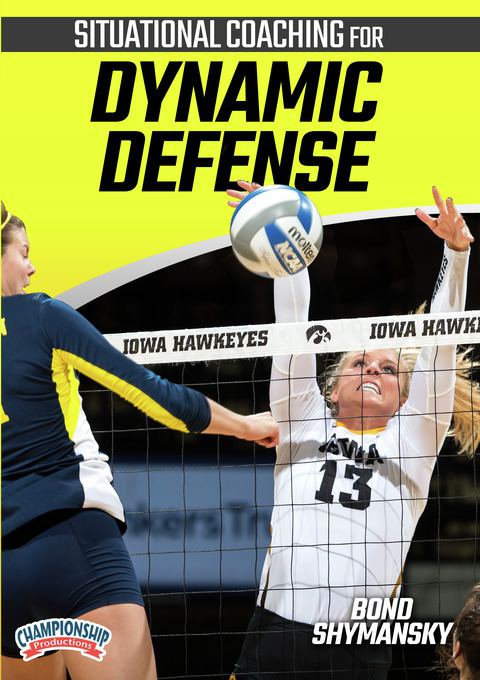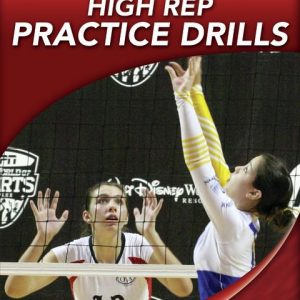Situational Coaching for Dynamic Defense
$39.99
Discover proven strategies and drills for training your defense to control chaos in the moment
-
- Explore the strengths and weaknesses of four defensive systems so you can make in-game adjustments and prepare your team for any situation
- Train your back row players to combat holes in the block and make dynamic defensive plays
- Teach your blockers how to recover when they’re late or out of position and still win points for your team





University of Iowa Head Coach;
former Marquette University Head Coach; 2013 Big East Champs;
former Georgia Tech Head Volleyball Coach; 2004 ACC Coach of the YearUniversity of Iowa head volleyball coach, Bond Shymansky, guides you through the process of creating moments in practice that your players will see repeatedly in match play to prepare them to make adjustments on the fly, play as a cohesive unit, and win points for your team.
Coach Shymansky walks you through the basics of four defensive systems: perimeter, middle, right up, and rotation. He highlights the strengths and weakness of each defense. Along with his University of Iowa team, Coach Shymansky demonstrates the situations your team will face while playing each defense and what to look for when making in-game switches between different systems.
Blocking Scenarios
You’ll develop an understanding of what the blockers’ responsibilities are in the defensive systems and how the defense behind them will adjust. Coach Shymansky explains how the defense adjusts when there is a hole in the block due to the blocker being late or not getting there at all. This happens a lot in games, and if your team is prepared for the situation, they will be more likely to get a dig and run an offense off of it.
Transition Movement
Coach Shymansky covers transition from a dig and what a team should do if the blockers switch after an offensive attack. He answers the question, “How can we be prepared defensively to be dynamic even when they have control of a swing or an attack that we just made?”
Swing Block Movement
You will learn how to properly execute the swing block. Additionally, your players will discover what they need to do when they’re late and how to make a good block movement so they can get their hands across the net. Coach Shymansky demonstrates a one-foot crossover swing block that is used when the blocker is going to be late. You will also learn how to get the rest of the defense to react to the blockers.
Installation of Defenses During Games
Discover valuable ways to make a defensive system change in the middle of a set. Coach Shymansky explains how the use of hand signals and verbal cues can be used to change defenses in the middle of a match, so players know when and how to change and everyone’s on the same page.
Installation of Blocking Schemes
Coach Shymansky explains what the different blocking schemes are and when to utilize them in the middle of a match. He covers the commit block, spread block and bunch read block. You’ll learn when to make pre-service adjustments based on the opponent’s rotation, hot hitter or go-to hitter, which will help your team get better prepared to block. Coach Shymansky also covers what middles need to do, how they communicate with the back row and what back row adjustments need to be made defensively.
Defending the Back Row Attack
One of the most confusing philosophies in volleyball is how to defend the back row attack. Coach Shymansky gives an explanation on how to defend it and explains the duties of the front row and the duties of the back and how they differ from normal defense.
Everyone has heard the phrase defense wins championships. The philosophies and tips in this video will help your team’s defense get you more points.
“I have been looking for something like this for a long time. This is something that I have been missing as a coach and I can guarantee many varsity and college coaches will feel the same way. This is an easy to follow and understand hand book of team dynamic defense.” – Customer Review
74 minutes. 2016.